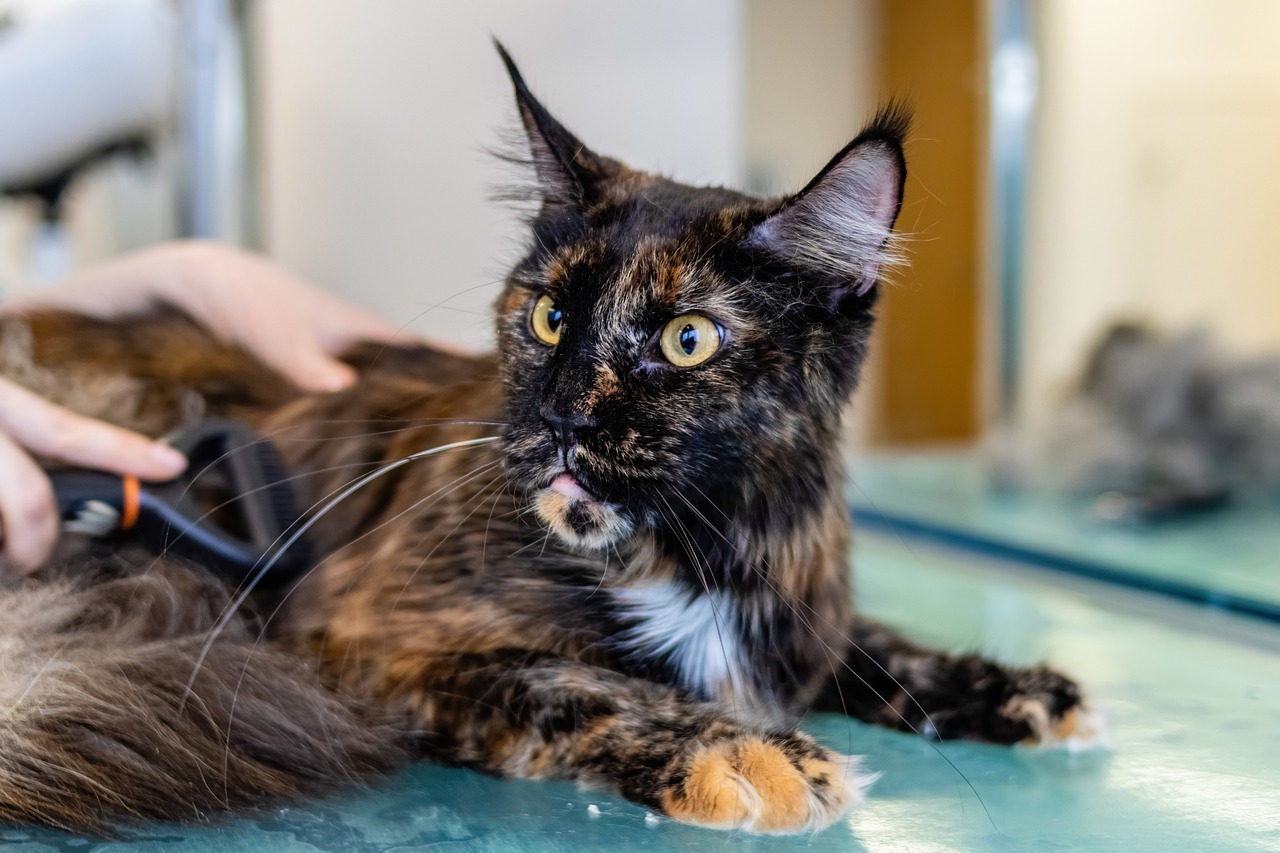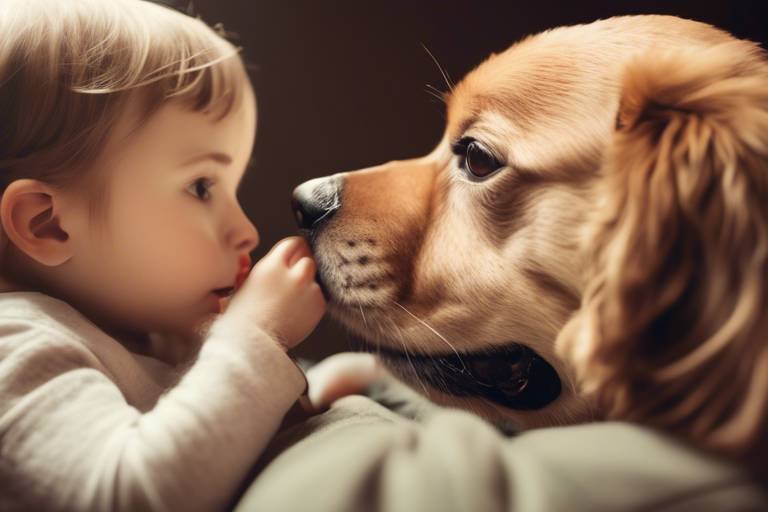How to Help Your Pet Adjust to a New Schedule
Adjusting to a new schedule can be a daunting task, not just for us humans but for our furry friends as well. Just imagine how confusing it must be for your pet when their daily routine suddenly changes! One moment they're used to a specific feeding time, play sessions, or walks, and the next, everything is up in the air. It’s our job as pet owners to ensure that this transition is as smooth as possible. In this article, we’ll explore effective strategies that can help your pet adapt to a new routine, ensuring their comfort and well-being during this crucial transition period.
Recognizing the specific needs of your pet is crucial in easing their transition. Just like us, pets have their own unique personalities and temperaments. Some pets may take changes in stride, while others might feel anxious and unsettled. For example, a dog that thrives on routine may become stressed with abrupt changes, while a cat might be more adaptable. Understanding these differences allows you to tailor your approach, providing the comfort and security your pet needs. So, take a moment to observe your pet's behavior and consider their individual needs before making any changes.
Making gradual changes to your pet's schedule can help minimize stress. Think of it like climbing a staircase—if you try to leap to the top step, you might stumble! Instead, taking one step at a time can make the journey smoother. Start by adjusting the schedule in small increments. For instance, if you need to shift your pet's feeding time, try moving it by 15 to 30 minutes each day until you reach the desired time. This slow introduction allows your pet to adjust without feeling overwhelmed.
Developing a structured transition plan allows you to implement changes systematically. A well-thought-out plan can be your roadmap during this time. Consider including the following elements in your plan:
- Timelines: Set specific dates for when you will implement changes.
- Activities: Outline daily activities that will help your pet adapt, such as feeding, walks, and playtime.
- Monitoring: Decide how you will track your pet's behavior during the transition.
By having a clear plan, you can ensure that you’re not making changes haphazardly, which could lead to confusion for your pet.
Adjusting daily activities, such as feeding and walks, can significantly impact your pet's adjustment. For example, if your dog usually goes for a walk in the morning, shifting that to the afternoon can throw them off balance. To make these changes effectively, consider the following tips:
- Start with one change at a time.
- Keep other elements of the routine the same to provide stability.
- Gradually shift the timing over several days or weeks.
By doing this, your pet will have a better chance of understanding the new schedule without feeling lost.
Observing your pet's behavior during the transition is essential. It's like being a detective—pay close attention to any changes in their mood or habits. Are they eating less? Are they more anxious or lethargic? These could be signs of stress or discomfort. By recognizing these signs early, you can address them promptly, whether that means reverting to an earlier routine or providing extra comfort and attention during this time.
Utilizing positive reinforcement can encourage your pet to embrace new routines. Just like we respond better to praise than criticism, pets thrive on rewards! Use treats, praise, or playtime to reward your pet for adapting to the new schedule. For instance, if your dog successfully adjusts to a new feeding time, give them a special treat afterward. This creates a positive association with the change, making it more likely they’ll embrace it.
Consistency is key in helping your pet adjust. Imagine trying to learn a new skill without regular practice—it's tough! The same goes for pets. Once you've established a new routine, stick to it. This means feeding, walking, and playtimes should occur at the same time each day. Additionally, maintaining familiar elements, such as favorite toys or activities, can provide stability and reassurance.
Establishing a clear and predictable routine helps your pet understand what to expect. It’s like giving them a daily schedule to follow. Consider creating a visual chart that outlines daily activities, which can serve as a reminder for both you and your pet. This can include feeding times, walks, play sessions, and even quiet time. The more predictable the routine, the more secure your pet will feel.
Including familiar activities in your pet's new schedule can ease the transition. Think of it as adding a sprinkle of comfort to their day. Integrate their favorite games, cuddle times, or even training sessions into the new routine. These familiar activities can help your pet feel more at ease and remind them that even though their schedule has changed, the love and attention they receive from you remain constant.
Sometimes, professional guidance may be necessary for a smoother transition. If you notice persistent signs of stress or behavioral issues, it might be time to consult a veterinarian or an animal behaviorist. They can provide tailored advice and support, helping you and your pet navigate this new chapter more effectively. Remember, it’s always better to seek help if you’re unsure!
Q: How long does it typically take for a pet to adjust to a new schedule?
A: The adjustment period can vary depending on the pet and the extent of the changes. Generally, it may take anywhere from a few days to several weeks. Patience is key!
Q: What are common signs that my pet is stressed during the transition?
A: Look for changes in behavior such as loss of appetite, excessive barking, hiding, or destructive behavior. These could indicate stress or anxiety.
Q: Should I consult a professional if my pet is struggling to adjust?
A: Yes, if you notice persistent issues or if your pet seems extremely distressed, it’s wise to consult a veterinarian or an animal behaviorist for guidance.

Understanding Your Pet's Needs
When it comes to helping your furry friend adjust to a new schedule, the first step is to truly understand their unique needs. Just like humans, pets have their own personalities, preferences, and quirks that influence how they react to changes. Some pets may be adventurous and embrace new routines, while others might be more cautious, requiring a gentle approach. This is why it's crucial to observe and recognize the specific signs your pet exhibits during transitions.
For instance, consider the different responses among various types of pets. A dog might show excitement or anxiety through barking or pacing, while a cat may retreat to a hiding spot. Understanding these behaviors can help you tailor your approach effectively. Here are some key aspects to keep in mind:
- Age: Younger pets might adapt more quickly than older ones, who may struggle with changes.
- Temperament: A naturally anxious pet will likely need more time and patience compared to a laid-back companion.
- Health status: Pets with health issues may require additional considerations during transitions.
By paying attention to these factors, you can create a supportive environment that makes your pet feel safe and secure. Think of it as a dance; the more you understand your partner's moves, the better you can synchronize your steps. This understanding lays the groundwork for a smoother transition, as it allows you to anticipate your pet's needs and respond accordingly.
Moreover, routine changes can trigger a range of emotions in pets. Some may feel excited about new experiences, while others can become stressed or overwhelmed. Therefore, it's essential to monitor their behavior closely. Look for signs such as:
- Excessive barking or meowing
- Changes in appetite
- Withdrawal or hiding
- Destructive behavior
Recognizing these signs early on can help you take proactive measures to ease your pet into their new routine. Just like a caring parent who notices when their child is feeling uneasy, being attentive to your pet's feelings can make all the difference.
In summary, understanding your pet's needs is the cornerstone of helping them adjust to a new schedule. By observing their behaviors, considering their unique traits, and being responsive to their emotions, you can create a nurturing environment that fosters comfort and stability. Remember, patience is key, and with time, your pet will thrive in their new routine.

Gradual Adjustments
Making to your pet's schedule is not just a good idea; it's essential for their emotional well-being. Just like humans, pets thrive on routine, and a sudden change can throw them into a tailspin of confusion and anxiety. Imagine waking up one day and finding that your entire daily rhythm has been flipped upside down—how would that make you feel? That's exactly what your furry friend experiences when faced with abrupt changes. By introducing modifications slowly, you can help your pet feel more secure and less stressed.
Start by identifying the key elements of your pet's current routine. This could include their feeding times, walks, playtime, and even bedtime. Once you have a clear understanding, you can begin to make incremental changes. For example, if you're planning to shift your dog's feeding time from 8 AM to 7 AM, try adjusting it by just 15 minutes each day. This way, your pet can gradually adapt to the new schedule without feeling overwhelmed.
Here’s a simple timeline to illustrate how you can implement gradual adjustments:
| Day | Old Schedule | New Schedule |
|---|---|---|
| 1 | 8:00 AM | 7:45 AM |
| 2 | 8:00 AM | 7:30 AM |
| 3 | 8:00 AM | 7:15 AM |
| 4 | 8:00 AM | 7:00 AM |
As you can see, making small changes can lead to a smoother transition. It’s also important to keep an eye on your pet’s reactions during this period. Are they adjusting well, or do they seem more anxious? Pay attention to their body language and vocalizations. If you notice signs of distress, consider slowing down the transition process. Remember, the goal is to make your pet feel as comfortable and secure as possible.
Incorporating familiar activities into these gradual changes can also help ease the transition. For instance, if your pet enjoys a specific game or a favorite spot in the house, make sure to include those elements in the new routine. This can provide a sense of stability amidst the changes and reinforce positive associations with the new schedule.
Lastly, don't forget that patience is key! Just like humans, pets need time to adjust. If you approach the situation with a calm demeanor and a lot of love, your pet will likely adapt to their new routine in no time. So take a deep breath, and enjoy the journey together!
Creating a Transition Plan
Creating a transition plan for your pet is essential when adjusting to a new schedule. Think of it as a roadmap that guides both you and your furry friend through uncharted territory. Just like humans, pets thrive on predictability and routine, so having a structured plan can significantly reduce their anxiety. Start by assessing your pet's current schedule and identifying the key areas that need adjustment. This could be anything from feeding times to play sessions or even bathroom breaks.
Once you have a clear understanding of what needs to change, outline a timeline for implementing these adjustments. For example, if you plan to shift your pet's feeding time from 8 AM to 7 AM, you might want to make that change gradually over a week. Each day, move the feeding time forward by 10 to 15 minutes. This gradual approach helps your pet adapt without feeling overwhelmed.
Consider including specific activities in your transition plan that will help your pet feel more comfortable during this period. Here are some suggestions:
- Consistent Feeding Times: Stick to the new feeding schedule diligently.
- Regular Walks: Maintain a consistent walking routine to provide exercise and mental stimulation.
- Playtime: Set aside specific times for play to keep your pet engaged and happy.
Additionally, keep a journal to track your pet's behavior during the transition. Note any signs of stress or discomfort, as this will help you adjust the plan as needed. If you notice your pet becoming anxious or unsettled, it may be a sign that you need to slow down the process or provide extra comfort during these changes.
Finally, don’t underestimate the power of patience. Just like us, pets need time to adjust to new routines. Celebrate small victories along the way, whether it's your pet embracing a new feeding time or showing excitement for a scheduled walk. Remember, the goal is to create a sense of security and stability for your pet, making the transition as smooth as possible.
Daily Routine Changes
Adjusting your pet's daily routine is one of the most impactful steps you can take to ensure a smooth transition. Think of it as a dance; each step must be in sync with the others to create harmony. Just like humans, pets thrive on predictability and stability, so making changes gradually can significantly reduce their anxiety. For instance, if you're shifting your pet's feeding time, consider moving it by 15 to 30 minutes each day rather than making a sudden leap. This gentle approach helps your furry friend adapt without feeling overwhelmed.
Additionally, it's crucial to consider the specific needs of your pet. Dogs, for example, may require more frequent outdoor breaks, while cats might appreciate a stable indoor environment. When altering their daily activities, keep in mind the following aspects:
- Feeding Schedule: Gradually alter the times you feed your pet, ensuring they don't associate the change with hunger pangs.
- Exercise Routine: If you plan to change the timing or duration of walks, start with short adjustments and observe how your pet reacts.
- Playtime: Incorporate their favorite games into the new schedule to keep their spirits high and make the transition enjoyable.
For pets, a sudden change in their routine can feel like being tossed into a whirlwind. To combat this, consider creating a visual schedule that outlines the new daily routine. You can use a simple table like the one below to map out the changes clearly:
| Time | Activity |
|---|---|
| 8:00 AM | Breakfast |
| 9:00 AM | Morning Walk |
| 1:00 PM | Playtime |
| 6:00 PM | Dinner |
| 8:00 PM | Evening Cuddle Time |
By laying out a structured plan, you not only keep yourself organized but also provide your pet with a sense of security. They will begin to associate specific times with activities, helping to reduce any uncertainty they might feel. Remember, the goal is to create a routine that feels familiar yet allows for the necessary adjustments.
As you implement these changes, be observant. Watch for any signs of stress or discomfort, and be ready to make further adjustments if needed. Your pet will appreciate the effort you put into making their world a little less chaotic, and in return, you'll enjoy a happier, more settled companion.
Q: How long does it typically take for a pet to adjust to a new routine?
A: Adjustment periods can vary widely depending on the pet's personality. Generally, it can take anywhere from a few days to several weeks for pets to fully adapt.
Q: What are some signs that my pet is having trouble adjusting?
A: Look for changes in behavior such as excessive barking, hiding, changes in appetite, or aggression. If you notice these signs, it may be time to reassess the changes you've made.
Q: Can I use treats to help my pet adjust?
A: Absolutely! Positive reinforcement, such as treats or praise when your pet follows the new routine, can encourage them and make the transition smoother.
Monitoring Behavior
When it comes to helping your pet adjust to a new schedule, monitoring their behavior is absolutely essential. Think of it as tuning into a radio station; if you don’t adjust the dial just right, you might miss out on some important signals. Your furry friend may not be able to verbalize their feelings, but their actions can speak volumes. By paying close attention to their behavior, you can identify signs of stress or discomfort that might arise during this transition period.
It's important to look for specific behaviors that might indicate how your pet is coping. For instance, if your dog is suddenly more clingy than usual, or if your cat is hiding more often, these could be red flags signaling that they are struggling to adapt. Here are some common signs to watch for:
- Changes in Appetite: If your pet is eating significantly less or more than usual, it could be a sign of anxiety.
- Excessive Barking or Meowing: Vocalizations may increase as a form of stress or confusion.
- Destructive Behavior: Chewing on furniture or scratching at doors can indicate frustration or anxiety.
- Withdrawal: If your pet is isolating themselves, it might mean they are feeling insecure.
- Changes in Sleep Patterns: Restlessness or sleeping too much can be a response to stress.
To effectively monitor your pet's behavior, consider keeping a behavior journal. This can help you track changes over time and identify patterns that may be linked to the new schedule. Note down when specific behaviors occur, their frequency, and any triggers you observe. This can be incredibly helpful when discussing your pet's adjustment with a veterinarian or animal behaviorist.
In addition to observing your pet, it's essential to engage with them regularly. Spend time playing, cuddling, or simply being present. This not only helps you gauge their emotional state but also strengthens your bond. Remember, your presence is a source of comfort for them, and your interactions can provide valuable insights into how they are coping with the changes.
Ultimately, being proactive and attentive to your pet's behavior can make all the difference in their adjustment to a new routine. By recognizing the signs of stress early, you can take steps to alleviate their discomfort and help them feel secure in their new environment. Your pet relies on you to be their advocate during this transition, so stay observant and responsive to their needs.
Q: How long does it take for a pet to adjust to a new schedule?
A: The adjustment period can vary widely depending on the individual pet and the extent of the changes. Generally, it can take anywhere from a few days to several weeks. Patience and consistency are key!
Q: What should I do if my pet shows signs of extreme stress?
A: If your pet displays severe signs of stress, such as excessive barking, hiding, or aggression, it’s important to consult a veterinarian or an animal behaviorist for tailored advice.
Q: Can I use calming products to help my pet adjust?
A: Yes, there are various calming products available, such as pheromone diffusers, calming collars, and anxiety wraps. However, it’s best to consult with a professional before introducing any new products.
Q: How can I make my pet feel more secure during the transition?
A: Maintaining a familiar environment, providing plenty of affection, and integrating their favorite activities into the new routine can help your pet feel more secure.
Positive Reinforcement Techniques
When it comes to helping your pet adjust to a new schedule, positive reinforcement can be your secret weapon. Imagine trying to teach a child to ride a bike; would you scold them every time they fell, or would you cheer for every small victory? The same principle applies to our furry friends. By rewarding your pet for adapting to changes, you not only encourage good behavior but also strengthen your bond with them.
So, how can you effectively implement positive reinforcement? Start by identifying what motivates your pet. For some, it might be their favorite treat, while for others, a good belly rub or playtime might do the trick. The idea is to create a positive association with the new routine. For example, if you’re introducing a new feeding schedule, reward your pet with a treat when they eat at the designated time. This not only makes the experience enjoyable but also reinforces the behavior you want to see.
Another effective technique is to use verbal praise. Dogs, in particular, thrive on affirmations. A simple “Good boy!” or “You’re such a clever kitty!” can go a long way in making your pet feel appreciated and understood. It’s like giving them a little high-five every time they do something right! To maximize the impact, try to be enthusiastic and genuine in your praise; pets can sense your emotions.
Consider incorporating a structured reward system. For instance, keep a chart where you track your pet’s progress with the new schedule. Each time they successfully adapt to a change, mark it down. After a certain number of successful days, reward them with a special treat or extra playtime. This not only keeps your pet motivated but also gives you a visual representation of their progress, which can be quite satisfying!
Additionally, remember that patience is key. Not every pet will adjust at the same pace. Some may take to the new schedule like a duck to water, while others might need a bit more coaxing. If your pet seems hesitant or anxious, don’t rush the process. Instead, use gradual adjustments combined with positive reinforcement to help them feel secure. It’s important to foster an environment where they feel safe to explore these changes without fear.
Here’s a quick overview of some effective positive reinforcement techniques:
| Technique | Description |
|---|---|
| Treat Rewards | Offer a favorite treat when your pet successfully adapts to a new routine. |
| Verbal Praise | Use enthusiastic affirmations to encourage your pet when they do well. |
| Progress Chart | Create a chart to track your pet's adaptation, rewarding milestones along the way. |
| Patience & Understanding | Recognize that every pet adjusts at their own pace; be supportive and patient. |
Incorporating these techniques into your routine can transform the way your pet experiences change. It’s all about making them feel loved and secure during what can be a stressful time. Remember, every little step counts, and with your support, your pet will thrive in their new schedule!
- How long does it take for a pet to adjust to a new schedule?
Adjustment periods can vary widely from pet to pet. Some may adapt in a few days, while others might take weeks. The key is to be patient and consistent.
- What if my pet shows signs of stress?
If your pet appears anxious or stressed, it’s important to slow down the transition. Consider reverting to the previous routine temporarily and gradually reintroducing changes.
- Can I use toys as a form of positive reinforcement?
Absolutely! Engaging your pet with their favorite toys during training can be a great motivator and makes the experience more enjoyable.

Maintaining Consistency
When it comes to helping your pet adjust to a new schedule, consistency is absolutely crucial. Think about it: just like us, pets thrive on predictability. They find comfort in knowing what comes next in their day-to-day lives. If you suddenly change their routine without any warning, it can lead to confusion and stress. Imagine waking up one morning and finding that your entire day has been flipped upside down! Your pet feels the same way when their schedule changes abruptly.
To maintain consistency, you should stick to the new schedule as closely as possible. This means keeping feeding times, walks, and playtimes uniform. For example, if you decide to feed your dog at 7 AM instead of 8 AM, make sure to do it every day at that time. This helps your pet establish a new rhythm. It's like teaching a child a new bedtime; once they get used to it, it becomes second nature.
Another important aspect of maintaining consistency is to incorporate familiar elements into the new routine. Pets often find solace in activities they recognize and enjoy. Here are some ways to blend the new schedule with familiar activities:
- Favorite Games: If your dog loves fetch, make sure to include it in the new schedule. This gives them something to look forward to.
- Bonding Time: Set aside specific times each day for cuddling or grooming. This not only helps in maintaining consistency but also strengthens your bond.
- Training Sessions: Incorporate short training sessions that reinforce good behavior. This can be a fun way to keep their mind engaged while sticking to the routine.
By establishing a clear and predictable routine, you help your pet understand what to expect. This predictable environment can significantly reduce anxiety and make it easier for them to adapt. Just like how we feel more secure when we know what’s coming next, pets feel the same way. So, whether it's a morning walk or an evening cuddle session, make sure these elements remain constant.
Finally, remember that patience is key. Even with a consistent routine, it may take some time for your pet to fully adjust. Be observant and supportive. If you notice any signs of discomfort, such as excessive barking, hiding, or changes in eating habits, it might be time to reassess and make minor adjustments to your approach. Consistency doesn’t mean rigidity; it’s about finding a balance that works for both you and your furry friend.
Q: How long does it usually take for pets to adjust to a new schedule?
A: The adjustment period can vary depending on the pet and the extent of the changes. Generally, it can take anywhere from a few days to a few weeks.
Q: What should I do if my pet shows signs of stress?
A: If your pet is showing signs of stress, such as hiding or changes in appetite, it’s important to take a step back. Review your routine and consider making gradual adjustments instead of abrupt changes.
Q: Can I use treats as a form of positive reinforcement?
A: Absolutely! Treats can be an excellent way to reward your pet for adapting to new routines. Just be mindful of their overall diet.
Q: Should I consult a professional if my pet is struggling to adjust?
A: If you notice persistent issues, it may be beneficial to consult a veterinarian or an animal behaviorist for tailored advice and support.
Establishing a Routine
Establishing a clear and predictable routine is essential for your pet's adjustment to a new schedule. Just like humans thrive on structure and familiarity, pets also feel more secure when they know what to expect. Think of it as building a cozy little bubble around them, where every day has its rhythm. By creating a consistent daily schedule, you help your furry friend feel more at ease, reducing anxiety and promoting a sense of stability.
To kick things off, consider the basic components of your pet's day. This includes feeding times, walks, play sessions, and bedtime. By setting specific times for these activities, you can create a framework that your pet will learn to anticipate. For instance, if your dog is used to being fed at 7:00 AM, try to stick to that time as closely as possible. This not only helps with their digestion but also reinforces their internal clock.
Moreover, it’s crucial to keep the routine consistent on weekends and weekdays alike. Pets are creatures of habit; they notice when things change. If you usually take your dog for a walk at 5:00 PM, don’t let it slide to 7:00 PM just because you’re feeling lazy on a Saturday. Consistency helps them feel secure and reduces the chances of behavioral issues arising from confusion.
But it’s not just about the timing; the activities themselves should also be predictable. For example, if your cat enjoys a particular game or toy, make sure to incorporate that into the daily routine. This could be a fun play session in the morning or a cozy cuddle time in the evening. By including these familiar activities, you not only make the routine enjoyable but also strengthen your bond with your pet.
Lastly, consider using visual aids to help with the routine. A simple chart or schedule can work wonders, especially for pets that are more visually oriented. You could create a colorful chart that outlines the day’s activities, placing it somewhere visible. This way, not only do you keep yourself accountable, but your pet might also get excited seeing their day laid out in front of them!
In summary, establishing a routine is about creating a predictable environment that fosters comfort and security for your pet. By being consistent with feeding times, walks, and play, you're not just helping them adjust to a new schedule; you're also enhancing their overall well-being. So, roll up your sleeves, get organized, and watch your pet thrive in their new routine!
- How long does it take for a pet to adjust to a new routine? Every pet is different, but generally, it can take anywhere from a few days to a few weeks for them to fully adapt.
- What signs indicate my pet is stressed during the transition? Look for changes in behavior such as excessive barking, hiding, or changes in appetite. If you notice any of these, it may be time to reassess your approach.
- Can I use treats to encourage my pet to follow the new routine? Absolutely! Positive reinforcement through treats can be an effective way to motivate your pet to embrace the new schedule.
- Should I consult a vet if my pet struggles to adjust? Yes, if your pet shows prolonged signs of distress, consulting a veterinarian or animal behaviorist can provide tailored advice and support.
Incorporating Familiar Activities
When it comes to helping your pet adjust to a new schedule, one of the most effective strategies is to incorporate familiar activities into their daily routine. Think of it as adding a dash of comfort to an otherwise unfamiliar dish. Just like we find solace in our favorite songs or cherished hobbies during times of change, pets too thrive on the activities they know and love. By weaving these familiar threads into their new schedule, you can significantly ease their transition and keep their spirits high.
Start by identifying the activities that your pet enjoys the most. For dogs, this might include their favorite games of fetch, leisurely walks in the park, or even simple playtime with their favorite toys. Cats might prefer interactive play sessions with feather wands or puzzle toys that challenge their minds. Whatever the case may be, these activities serve as anchors in your pet's day, providing them with a sense of stability amidst the changes.
Moreover, consider the timing of these familiar activities. If your pet is accustomed to a morning walk before breakfast, try to maintain that schedule even as you introduce new elements. This consistency will help them feel more secure. You might also want to create a visual schedule that outlines the day’s activities, including these familiar ones, so your pet can see what to expect. A simple table can work wonders for this:
| Time | Activity |
|---|---|
| 7:00 AM | Morning Walk |
| 8:00 AM | Breakfast |
| 10:00 AM | Playtime with Favorite Toy |
| 2:00 PM | Interactive Puzzle Game |
| 5:00 PM | Evening Walk |
| 8:00 PM | Family Bonding Time |
Additionally, don’t underestimate the power of bonding time. Engaging in activities that promote interaction, such as grooming or cuddling, can provide comfort and reassurance. It’s like a warm hug for your pet’s soul! These moments not only strengthen your bond but also reassure them that despite the changes, some things remain constant.
In conclusion, by incorporating familiar activities into your pet's new schedule, you are not just helping them adjust; you are also creating a nurturing environment that fosters their emotional well-being. Remember, change can be daunting, but with a little creativity and love, you can make the journey smoother for your furry friend.
- How long does it take for a pet to adjust to a new schedule? - Every pet is different. Some may adapt within a few days, while others might take weeks. Patience is key!
- What if my pet shows signs of stress during the transition? - If you notice signs of stress, such as excessive barking or hiding, it’s essential to address these behaviors calmly and consider consulting a professional.
- Can I use treats to encourage my pet during this transition? - Absolutely! Positive reinforcement through treats can be a great way to motivate your pet and reward them for adapting to their new schedule.

Seeking Professional Advice
Transitioning your pet to a new schedule can be a daunting task, and sometimes, despite our best efforts, we might find ourselves in need of a little extra help. This is where seeking professional advice becomes not just beneficial, but essential. Whether it's a veterinarian or an animal behaviorist, these professionals are equipped with the knowledge and experience to provide tailored guidance for your furry friend.
But how do you know when it's time to seek help? Here are some signs that may indicate a need for professional intervention:
- Persistent Anxiety: If your pet shows signs of anxiety that don't seem to improve with your adjustments, it's a good idea to consult an expert.
- Behavioral Changes: Sudden changes in behavior, such as aggression, excessive barking, or withdrawal, can be red flags.
- Health Concerns: If your pet is experiencing physical symptoms like loss of appetite or lethargy, these could be stress-related issues that need medical attention.
When you decide to seek help, it’s important to choose the right professional. A veterinarian can assess your pet's physical health and rule out any underlying medical conditions, while an animal behaviorist can provide insights into behavioral adjustments and training techniques. Here’s a quick comparison of their roles:
| Professional | Focus Area | When to Consult |
|---|---|---|
| Veterinarian | Physical health and medical issues | When there are signs of illness or distress |
| Animal Behaviorist | Behavioral issues and training | When behavioral changes are observed |
Remember, seeking help is not a sign of failure; it's a proactive step toward ensuring your pet's well-being. These professionals can offer strategies and solutions that you might not have considered, and they can help you create a more effective transition plan tailored specifically to your pet’s needs. After all, a happy pet means a happy owner!
Here are some common questions pet owners have when it comes to helping their pets adjust to a new schedule:
- How long does it take for a pet to adjust to a new routine? - The adjustment period can vary depending on the pet and the extent of the changes. Generally, it can take anywhere from a few days to several weeks.
- What are some signs that my pet is stressed? - Look for behaviors like excessive barking, hiding, changes in appetite, or destructive behavior.
- Should I change my pet's schedule all at once? - No, it’s best to make gradual changes to minimize stress and help your pet feel secure.
Frequently Asked Questions
- How long does it take for a pet to adjust to a new schedule?
The adjustment period can vary significantly depending on the pet and the extent of the changes. Generally, it can take anywhere from a few days to several weeks. It's essential to be patient and observe your pet's behavior during this time.
- What signs should I look for to know if my pet is stressed?
Common signs of stress in pets include excessive barking or meowing, hiding, changes in appetite, and destructive behavior. If you notice any of these signs, it may indicate that your pet is having difficulty adjusting to the new routine.
- Can I use treats to help my pet adjust?
Absolutely! Using treats as a form of positive reinforcement can be a great way to encourage your pet to adapt to new routines. Just make sure to use them in moderation and combine them with praise to create a positive association.
- Should I consult a veterinarian if my pet is struggling to adjust?
If your pet shows prolonged signs of stress or anxiety, it's a good idea to consult a veterinarian or an animal behaviorist. They can provide tailored advice and strategies to help your pet cope with the changes.
- Is it better to make changes gradually or all at once?
Making gradual changes is usually the best approach. Sudden shifts in routine can be overwhelming for pets, leading to increased stress. By introducing changes slowly, you can help your pet feel more secure and comfortable.
- How can I maintain consistency in my pet's new routine?
To maintain consistency, establish a clear daily schedule that includes feeding, walks, playtime, and other activities. Stick to this schedule as closely as possible, and try to incorporate familiar elements to provide stability.
- What if my pet refuses to follow the new routine?
If your pet is resistant to the new routine, try to identify what aspects they are struggling with. You may need to adjust your approach or go back to a previous routine temporarily until they become more comfortable with the changes.



















